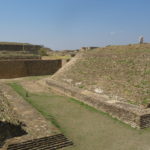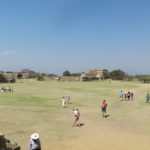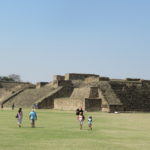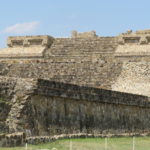This day was a loooong bus ride. We left Fes and stopped first in a beautiful little town built by the French in 1929. It is near a ski area and looked more like a Swiss village that anything French or Moroccan. Just outside the city that was a band of Moroccan monkeys wandering along side the road. The bus driver stopped and the monkeys met us with their paws out just like the little boys we saw in the medina yesterday. They wanted peanuts that the vendors conveniently had available for us to buy. Both vendors and monkeys benefitted from the stop. Men with beautifully saddled and groomed horses posed for us and as they use to say a good time was had by all.
We traveled through a rough countryside much like west Texas while crossing the Middle Atlas Mountains. The entire area was dotted with sheep herds and goats. The sheep provide income and the goats provide food. Donkeys herd the sheep and provide transportation for the families living there. There was a nomad camp near a spring and they will stay there for a few weeks before moving on to another area. After driving through some scary mountain passes the terrain changed dramatically. It literally became an oasis with date palms, green pastures and running water. The geography of this country is very varied and the people have learned to adapt over the many years it has existed. What was interesting to us is that the king likes to drive himself through the country and see what needs his people have and how he can help them meet their needs.
Our hotel tonight is very exotic. It is call a Kashba and that is perfect. Tiled floors, eastern style lanterns, date palms and flowers everywhere. It is hard to believe that Bogart and Bergmann are not lurking around somewhere. Tomorrow we ride a camel at sunset. Can hardly wait.






















